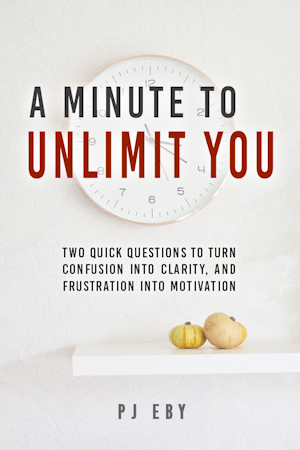Today I started re-reading David Seabury’s 1938 book, “How To Get Things Done”, and was rather surprised to see that even from the very beginning of the book, he describes a mental model that’s quite similar to that I proposed in The Multiple Self:
…I like to believe that the mind is a possession, a machine that will work for me, and so I try to see how the various parts of my mentality will help me execute a task. Let us suppose you are telling me about a prospective camping trip to Canada, asking my advice. First, I liberate my imagination – let myself take the journey, visualize the experiences you are likely to meet, your pleasures and your difficulties. I call on my memory, assembling all the points I know about camping in Canada, and ask my memory to pass the material to my imagination so it can make an organic visual picture of your probable expedition. Then I ask my reason to come into play, ask it to analyze and classify, systematize, and plan. Now, you might say, I sit back and listen to the information that my mental processes have given me, and then pass on the knowledge to you. (emphasis added)
That sounds to me a lot like he’s setting up a pipeline in his head, something like “grep Canada <memory|imagination|reason >>/dev/mouth”. 🙂
The mind-as-machine metaphor continues through the first chapter, as he advises you to “Start with a single action…. Follow the spread of your effort, obey it, but don’t become involved in it. Use your abilities with perspective and detachment. Don’t identify yourself with your task.” I think this rather nicely describes what I was doing in “The Heart of the Resistance”, to keep “me” separate from “my horse”. By encouraging my subconscious to actually execute the bookkeeping tasks, while keeping my conscious mind detached, I was able to keep from getting bogged down in “my” confusion and frustration surrounding the task.
I think this also helps to highlight a couple of common themes across various mental disciplines. For example, Zen teaches that one should not become attached to the good or bad of an outcome, but rather simply observe. “Non-attachment”, in other words. One is to observe one’s feelings, whether of pride or frustration, and simply attend to the task.
Put in the proper context, this is clearly less an issue of philosophy or moral judgment, than it is a simple method for improving personal computational efficiency, so to speak. Allowing the conscious mind to get caught up in every feeling-judgment being spewed by the subconscious results in a kind of mental page-thrashing and wild-goose-chasing.
Worse, if you get entangled in your own feelings, you’re more likely to end up suppressing them or ignoring them – thereby shortcutting your own best judgment. Suppressing feelings means you end up having to rely solely on the narrow reasoning of the conscious mind, and end up going in circles.
Experience your feelings… and then let them go
Thus, Zen advises that you fully perceive your reactions – and then let them go. It seems to me that the process of perceiving allows your subconscious to determine that its message was received, allowing it to go on to its next task. Letting the reaction go, on the other hand, keeps your conscious mind free to observe – and perhaps occasionally step in to untangle something.
Hm. Whoa. That just gave me an idea. What if the function of consciousness is simply to provide the brain with a kind of “inner sense”, as a complement to the outer senses? It often seems to me as though the very process of observing one’s mental activity is useful and seems to correct problems, just by allowing them to be detected. It’s as if one’s subconscious mind learns about its own process through the observations of consciousness, and uses this to correct errors and develop new programs.
In fact this article (which I haven’t gotten around to finishing yet), suggests that consciousness evolved as a way to make it possible for the brain to learn more complex unconscious processes. Like driving a car, for example.
What I hadn’t thought about before (and might be in the article, for all I know), is that consciousness is effectively a feedback loop that provides commentary on ongoing mental activity. This aids learning because it helps provide feedback on whether the mental structures being built to form a particular procedure are in fact producing the correct behavior. Without this loopback, there would be no way for the brain to detect its own state during the process!
Think about it. Your brain is creating new TOTEs, wiring up a firing pattern to perform some behavior. But the TOTE itself doesn’t “know” anything. It just does something. Simple behavioral feedback can train simple neural networks. But complex behavior requires complex networks – which like any complex programs, require debugging. Wouldn’t it be odd, to realize that “you” are just your brain’s debugging tool?
But it’s more complex than that, I think. Evolution doesn’t produce such simple, straightforward designs as to have only one function for a subsystem. I think this basic debugging function got overlaid with a bunch of other things that needed similar structure. On some level, I think consciousness also helps to set goals and to assign values to outcomes. It also gets a veto on most behavior – not unlike a computer programmer setting a “breakpoint” in a debugging tool.
In a sense, one could almost say that the brain evolved consciousness so it could have a programmer!
But this isn’t quite right, because that implies that consciousness is more independent than it actually is. The brain is its own programmer; consciousness is just the loopback by which the brain can see what it’s doing, like a mirror and tools might allow a brain surgeon to operate on himself.
However, once you combine this loopback facility with language, it becomes capable of disrupting proper functioning. The “self” illusion creates feedback loops, and the loopback itself thinks it’s running things. Self-consciousness then interferes with every kind of action, as one’s critical eye turns inward, making one’s ego (a social illusion of self) the focus of observation instead of the functioning of one’s internal processes. The result is a recursive degradation of image; a pair of funhouse mirrors producing an infinite series of ever-darker shadows of whatever’s actually there.
You can take this idea another step further. Talking to a counselor or trusted friend – or writing in a blog or journal – allows another layer of self-introspection, another layer of detatchment. You get to hear yourself think, so to speak. Just the very act of doing this is useful, even if nobody says anything back. Just the process of information echoing back to your brain about its own state, if done in the right way, allows it to make its own adjustments.
It’s almost as if, by getting too caught up in our ideas of “self”, we cut off the brain’s access to its debugging tool, leaving it with no way to fix its errors. Talk it out, however, and you restore the diagnostic information flow.
The Mind is a Mirror
But if the Zen interpretation is correct, this would all be unnecessary if we just meditated all the time. That is, if we simply observed the operation of our brains, without obsessing or interfering or self-judging. (And by self-judging, I mean attempting to judge oneself by the content of one’s mental processes, as opposed to impassively assessing their operation. Judging content leads to self-consciousness, but assessing operation just lets the brain go on with its job.)
This also explains the whole “grow your brain by meditating” thing. If the proper function of consciousness is to be a diagnostic display for the brain to do its own programming, then of course you’re not going to be growing new networks while you’re doing nothing but looping the existing contents of your brain and applying socialized prejudices to them.
In other words, it might not really be that meditating grows your brain. It might be more that not meditating is stunting what should be its normal growth!
I didn’t originally intend for this post to be so much about Zen; in fact the original title was going to be “Use Your Abilities, Don’t Work Yourself”. I was going to jump from a brief mention of meditation to the subject of relaxation, which comes up in various approaches to therapy and meditation. But as it turns out I’ll just mention relaxation briefly today.
Some studies have shown that the activity of the conscious mind is greatly associated with the operation of the voluntary muscles. Muscle tension seems to stimulate, or perhaps be stimulated by, conscious-mind processing. Relaxing the muscles seems to also relax the grip of self-consciousness, which again would seem to help let the brain use consciousness in the way it was meant to. It’s almost as though tensing our muscles literally causes us to “hold on to ourselves” in the sense of freezing our current processes and preventing any change. (Perhaps there is some evolutionary disadvantage to being too reflective during a stressful situation!)
Anyway, it’s really interesting to see that some aspects of Zen can be seen as merely being a user’s manual for correct operation of the brain, to bypass the design flaw that allows consciousness to become self-obssessing instead of merely self-assessing.
At this point, I realize I should probably expand on what I mean by the social self, as well as explore how the self-image, goal-seeking behavior, and various other things factor into this. I think the observations I’ve made today are beginning to bring a wide variety of stuff I’ve blogged about into an interesting synthesis.
But for right now, I’m just going to go ahead and toss this one out there for you guys to ponder on for the moment. It has given me a lot to think about, too. Perhaps I should dig out my old Zen books, and give them another read from a fresh perspective.






Your article The Multiple Self has changed me forever. I can’t describe how great this is what you are writing about, thank you.
I would like to point you to the teachings of Dark Zen (http://www.darkzen.com/ – it’s not about the dark side of the force, the more suitable name is mystical zen). The meditating it teaches is true to your theory, because as you are breathing during meditating you are focusing on the “command mode” not on the act itself. I’m doing this from some time now and hopefully this lets you tune into “command mode” better.
Also a nice quote you might want to use:
“Alright, brain. You don’t like me and I don’t like you, but let’s just do this and I can get back to killing you with beer.” – Homer J. Simpson
You said:
Anyway, it’s really interesting to see that some aspects of Zen can be seen as merely being a user’s manual for correct operation of the brain, to bypass the design flaw that allows consciousness to become self-obssessing instead of merely self-assessing.
I’m not sure that the ability to become self-obsessing is really a design flaw. As you have stated so many times, “it’s the journey, not the destination.” Without the ability to self-obsess, I’m not sure that consciousness would be possible, much less the fully conscious self-assessment that is so fulfilling.
Not that obsessing is good, but the ability to do so is inherent in the ability to truly asses.
“There never has been, nor will there ever be, any programming language in which it is the least bit difficult to write bad code.” — Lawrence Flon
"It's as if one's subconscious mind learns about its own process through the observations of consciousness, and uses this to correct errors and develop new programs."
This reminds me of the Cognitive Equation Principle. Briefly: intelligent systems construct a self-model by observing their own behavior and making guesses about "what kind of a mind do I need to be, in order to behave like this". Now, if you could directly observe the workings of any mind, you could perceive patterns in how information is processed, how the system reacts to different things, and so on.
The Cognitive Equation Principle states that once a mind is able to observe a pattern in itself, this creates a consciously represented concept about this pattern, which then joins all the other concepts the mind knows about (and the observation of which generated this new concept). Afterwards, the mind's internal systems can employ their new knowledge to explicitly work on the patterns that were previously only implicitly present.
"Cognitive Equation Principle: In an intelligent system, many abstract patterns that are present in the system at a certain time as patterns among other Schema and Concepts, will at a near-future time be present in the system as patterns among elementary system components.
The Cognitive Equation Principle, named after the Cognitive Equation from the 1994 book Chaotic Logic, basically means that Concepts and Schema emergent in the system are recognized by the system and then embodied as elementary items in the system — so that patterns among them in their emergent form become, with the passage of time, patterns among them in their directly-system-embodied form. This is a natural consequence of the way intelligent systems continually recognize patterns in themselves."